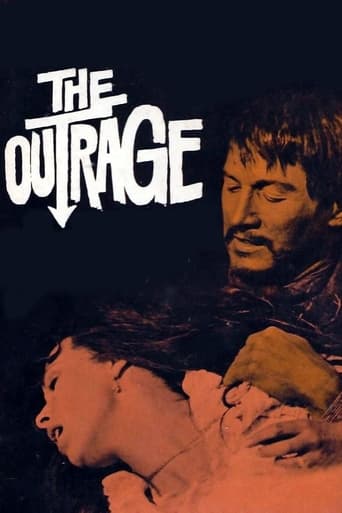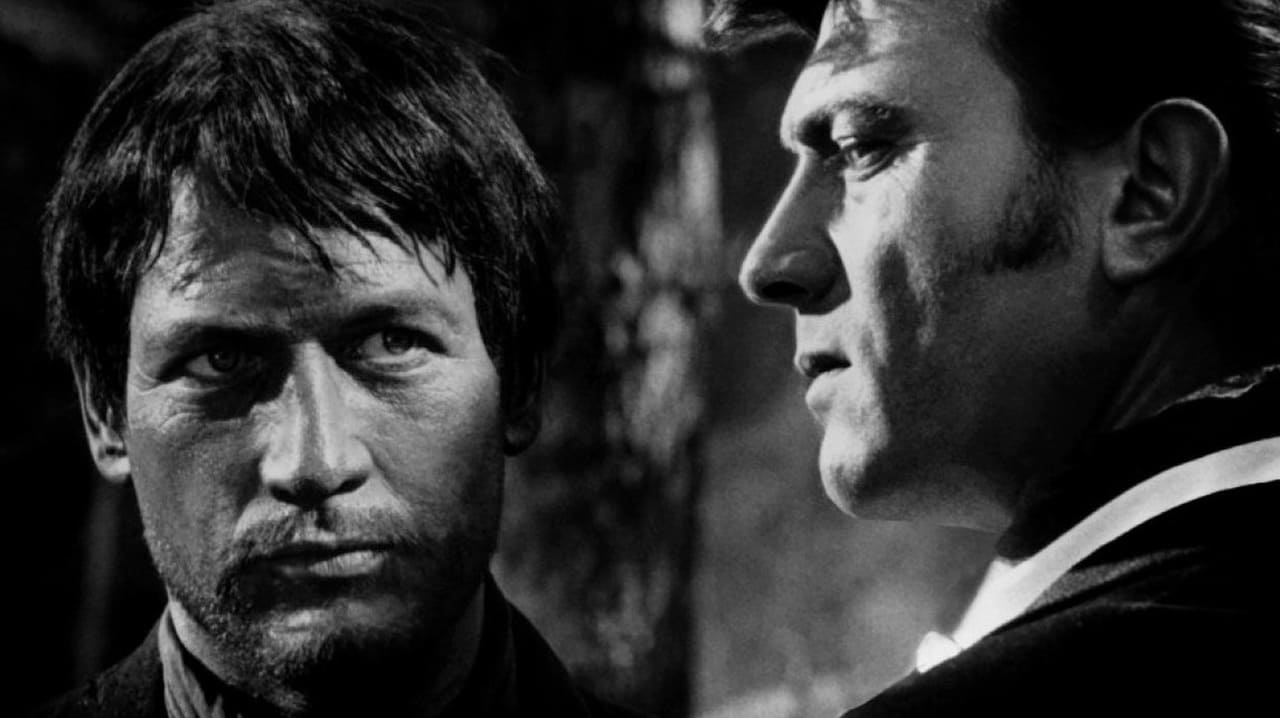Lee Eisenberg
Martin Ritt had already directed Paul Newman in "The Long, Hot Summer", "Paris Blues" and "Hud" when he made "The Outrage". A worthy effort but it doesn't quite compare to its source material (Akira Kurosawa's "Rashomon"). To us nowadays it's going to be jarring to see Newman playing a Mexican, especially since there were plenty of Latino actors who could've played the role.As for the movie overall, I thought that the most interesting scenes were of the three men (William Shatner, Edward G. Robinson, Howard DaSilva) going over the different versions of the story. It's worth seeing, but it's far from Ritt's best movie. I recommend the original version over this one, due to Kurosawa's clever way of filming some of the scenes.
dougdoepke
The movie's a pretentious mess. This is Hollywood monkeying with art film themes and techniques at a time when foreign films were getting an American toehold. The 96-minutes, an adaptation of Rashomon, asserts such profundities as people bringing their preconceptions to what they see, that people can be both good and bad, and that the law sometimes makes mistakes based on reputation. Now such obvious truisms can make worthwhile themes if dealt with properly. Here, however, whiz-bang style appears uppermost as the flash-backs and jump-forwards multiply in haphazard fashion, muddying up the story threads, if you can call them that. I'm also betting that his big slice of ham didn't make it into Newman's book of fond memories. The flashy style and dressed-up themes may have been cutting edge in '63, but now the empty pretensions are transparent. No need to go on with what for me was an often boring disappointment.(In passing—in response to a fellow reviewer, I think the abandoned infant rescued at the end amounts to an affirmation of the future despite the human failings we have seen in abundance. Also, by the day's standards, they had to end on an upbeat note. Thus, the baby is sort of dropped in at the last minute.)
Jay Raskin
It is amazing that Martin Ritt and Paul Newman made this film between their two masterpieces "Hud" and "Hombre". It seems that they should have known that the stage acting that Newman was doing would not be effective on film. In stage acting, you play broad and loud because the 23rd row has to see and hear you. In film you can adjust the volume and go in for the close-up to make sure the slightest gesture gets shown. For whatever strange reason, everybody, with the exception of super-old pro Edward G. Robinson, is doing stage acting. It comes across as over-the-top and ridiculous most of the time. The acting seriously undercuts the serious metaphysical questions about truth that the plot raises.Newman's performance matches his worse performance in "From the Terrace," although, I haven't seen him in "the Silver Chalice" (allegedly his worse). He reminded me of the 1960's cartoon commercial character for Frido's Corn Chips, "the Frido Bandido." He has on heavy stage make-up, so he is hardly recognizable, and his accent sounds quite fake. The real problem is that this is not a leading man role, but a role for a character actor. There were probably hundreds of out of work Spanish speaking actors in Hollywood at this time who could have done the role better.William Shatner isn't playing to the 23rd row, he is playing to the 46th row. As a priest who has lost his faith, he has one pained look throughout the movie. One of the nice things about Shatner is how relaxed and animated he is in all his roles, from the Twilight Zone to Star Trek to Boston Legal. Here he is the opposite: restrained to the point of being a cartoon cut-out.Claire Bloom and Laurence Harvey also give mundane and forgettable performances.For cinema fans this is worth seeing because it is a Martin Ritt film and he was a terrific director. However, like every great director, he had his misfires, and this is one of them. It is watchable, but much more should have been delivered considering the classical source material.
Nazi_Fighter_David
Newman's fifth film for Martin Ritt, "The Outrage" was based on the classic Japanese film "Rashômon," but Ritt transplanted the tale to the South Western U.S. following the Civil War
Carrasco has been convicted of raping a woman (Claire Bloom) and murdering her husband (Laurence Harvey), but four eye-witness accounts conflict
All agree that the bandit raped the woman, but only one asserts that he committed the killing
Sadistic, defiant, and challenging, Carrasco snarls, sneers, and walks with macho arrogance, to hide the fact that he can only be strong by tying a man to a tree and raping his wife
The role allowed Newman to give a bravura performance, not unlike Toshiro Mifune's in the Kurosawa film, and the stylization would fit the story if everybody else weren't playing it so straight
As it is, the performance seems too showy, easily understandable, exaggerated



 AD
AD



